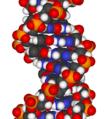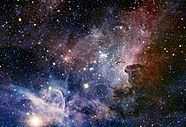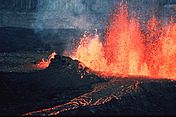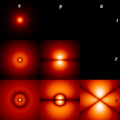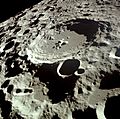Natural sciences facts for kids
Natural sciences are a group of sciences that help us understand the world around us. They study everything from tiny atoms to giant galaxies. These sciences look for the rules that nature follows. They often use the scientific method to discover these rules. This method helps scientists test ideas and learn new things.
Contents
What are Natural Sciences?
Natural sciences explore how the universe works. They study things that can be observed in nature. These sciences help us learn about life, the Earth, and even space.
Main Branches of Natural Science
There are several important branches of natural science:
- Physics studies how nature is made. It looks at how different parts of nature relate to each other. Physics helps us understand energy, force, and motion.
- Chemistry focuses on elements. It explores how they combine and react with each other. Chemistry helps us understand what things are made of.
- Biology is the study of living organisms. It looks at how they grow, develop, and interact. Biology covers everything from tiny cells to large animals.
- Geology explores the Earth. It studies how our planet formed and what it looks like today. Geology helps us understand rocks, mountains, and oceans.
- Astronomy is the study of space. It looks at stars, planets, and galaxies. Astronomy helps us understand the universe beyond Earth.
How Natural Sciences Help Us
Natural sciences are very useful. They help us create new things, which is called applied science. They guide us in testing new ideas and solving problems. For example, natural sciences are used to solve challenges in engineering and technology.
Math and computers are important tools for natural scientists. Math helps scientists describe rules and create models. Computers help process information and solve complex problems. They make it easier to understand and use scientific discoveries.
Other Natural Science Fields
Besides the main branches, there are other natural sciences:
- Atmospheric science studies Earth's atmosphere and weather.
- Oceanography explores the oceans, their life, and their processes.
- Materials sciences look at how different materials are made and how they behave.
History of Natural Sciences
People have always been curious about the world. Early thinkers like Aristotle studied nature. He wrote many books about the natural world. His ideas influenced scholars for a long time. Later, scientists like Isaac Newton made huge discoveries. Newton is famous for his laws of motion and gravity. These discoveries changed how we understand the universe.

Images for kids
-
The orbitals of the hydrogen atom are descriptions of the probability distributions of an electron bound to a proton. Their mathematical descriptions are standard problems in quantum mechanics, an important branch of physics.
-
Uncrewed and crewed spacecraft missions have been used to image distant locations within the Solar System, such as this Apollo 11 view of Daedalus crater on the far side of the Moon.
-
Plato (left) and Aristotle in a 1509 painting by Raphael. Plato rejected inquiry into natural philosophy as against religion, while his student, Aristotle, created a body of work on the natural world that influenced generations of scholars.
See also
 In Spanish: Ciencias naturales para niños
In Spanish: Ciencias naturales para niños


